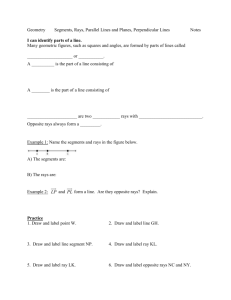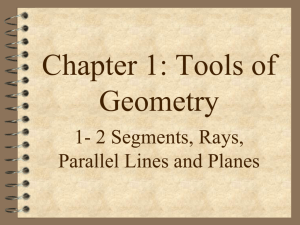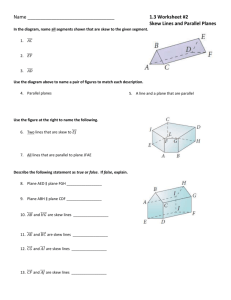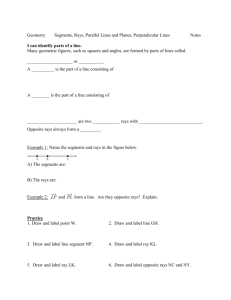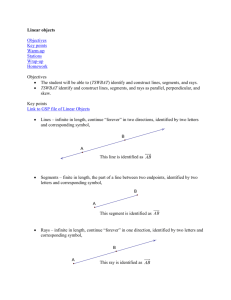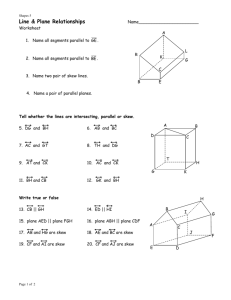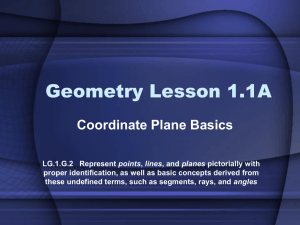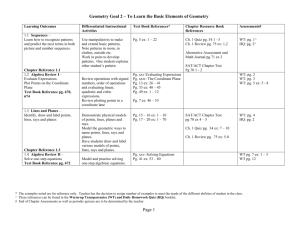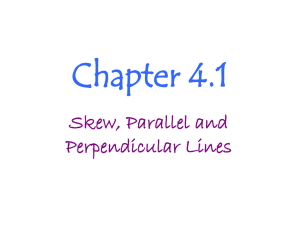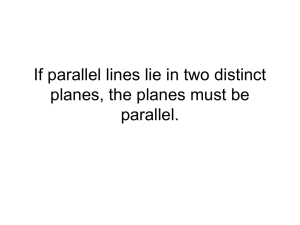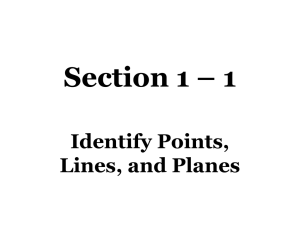1 - MILC
advertisement
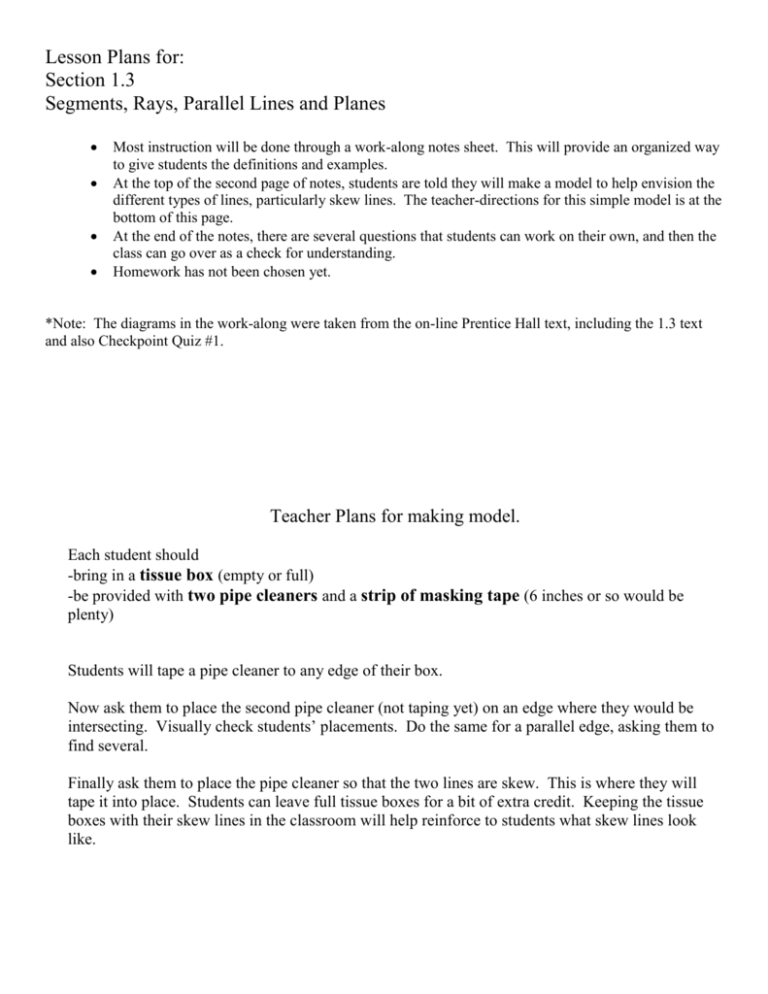
Lesson Plans for: Section 1.3 Segments, Rays, Parallel Lines and Planes Most instruction will be done through a work-along notes sheet. This will provide an organized way to give students the definitions and examples. At the top of the second page of notes, students are told they will make a model to help envision the different types of lines, particularly skew lines. The teacher-directions for this simple model is at the bottom of this page. At the end of the notes, there are several questions that students can work on their own, and then the class can go over as a check for understanding. Homework has not been chosen yet. *Note: The diagrams in the work-along were taken from the on-line Prentice Hall text, including the 1.3 text and also Checkpoint Quiz #1. Teacher Plans for making model. Each student should -bring in a tissue box (empty or full) -be provided with two pipe cleaners and a strip of masking tape (6 inches or so would be plenty) Students will tape a pipe cleaner to any edge of their box. Now ask them to place the second pipe cleaner (not taping yet) on an edge where they would be intersecting. Visually check students’ placements. Do the same for a parallel edge, asking them to find several. Finally ask them to place the pipe cleaner so that the two lines are skew. This is where they will tape it into place. Students can leave full tissue boxes for a bit of extra credit. Keeping the tissue boxes with their skew lines in the classroom will help reinforce to students what skew lines look like. 1.3 Segments, Rays, Parallel Lines and Planes Part I: We are going to study figures that are a part of a line. FIGURE DEFINITION Segment Ray Opposite Rays Name the segments Name the rays Name a pair of opposite rays Part II: Now we will look at the different ways that two lines may or may not intersect. TYPE OF LINES ARE THEY IN THE DO THEY EXAMPLE SAME PLANE? Intersecting Parallel Lines Skew Lines INTERSECT? EXAMPLES Skew lines are probably the most difficult to envision. We will make a model to help you see them. EXAMPLE: Name all segments that intersect DC Name all segments that are parallel to DC Name all segments that are skew to DC Part III: One last definition. Parallel Planes are ____________________________________________. Name a plane that is parallel to Plane ABCD Name another pair of parallel planes. Now try answering these questions on your own, using the diagram. 1. Are AD and FG in the same plane? 2. Name all the segments parallel to HG . 3. Name all segments skew to AD . 4. Draw CD on the diagram. 5. Mark a point I on the diagram so that AB and AI are opposite rays. Teacher Solutions: 1.3 Segments, Rays, Parallel Lines and Planes Part I: We are going to study figures that are a part of a line. FIGURE DEFINITION Segment The part of a line consisting of two endpoints And all points between them. Give examples, including how to name the segment The part of the line consisting of one Endpoint and all the points of the line on one side of the endpoint Give examples, including at least one ray that goes to the right and one that goes to the left. Be sure to show students how to name the rays Ray Opposite Rays Two collinear rays with the same endpoint. Note: opposite rays always form a line. Name the segments EXAMPLES Give an appropriate example. LP , LQ , QP Name the rays LP or LQ , PL , PQ , QL or QP Name a pair of opposite rays PL and PQ Part II: Now we will look at the different ways that two lines may or may not intersect. TYPE OF LINES ARE THEY IN THE DO THEY EXAMPLE SAME PLANE? INTERSECT? Yes YES! Intersecting Ask Parallel Lines Yes No Students for Skew Lines No No Examples. Skew lines are probably the most difficult to envision. We will make a model to help you see them. See directions for making model on lesson plan sheet. EXAMPLE: Name all segments that intersect DC ND , GD , HC Name all segments that are parallel to DC Name all segments that are skew to DC AB , GH , JI JN , JG , IH Part III: One last definition. Parallel Planes are Planes that do not intersect. Name a plane that is parallel to Plane ABCD Plane ABCD Plane GHIJ Name another pair of parallel planes. Ask students for examples. Now try answering these questions on your own, using the diagram. 1. yes Are AD and FG in the same plane? 2. Name all the segments parallel to HG . 3. Name all segments skew to AD . DC , EF , AB EF , HG , BF , GC 4. Draw CD on the diagram. 5. Mark a point I on the diagram so that AB and AI are opposite rays. and B, to the left of the figure. I should be collinear with A
